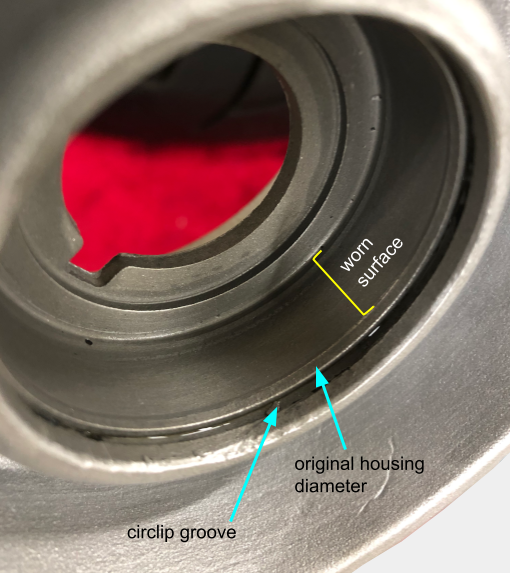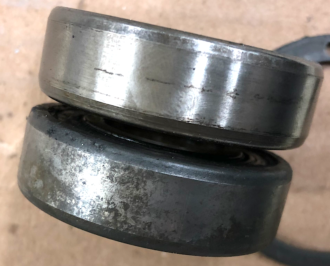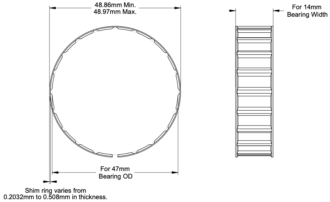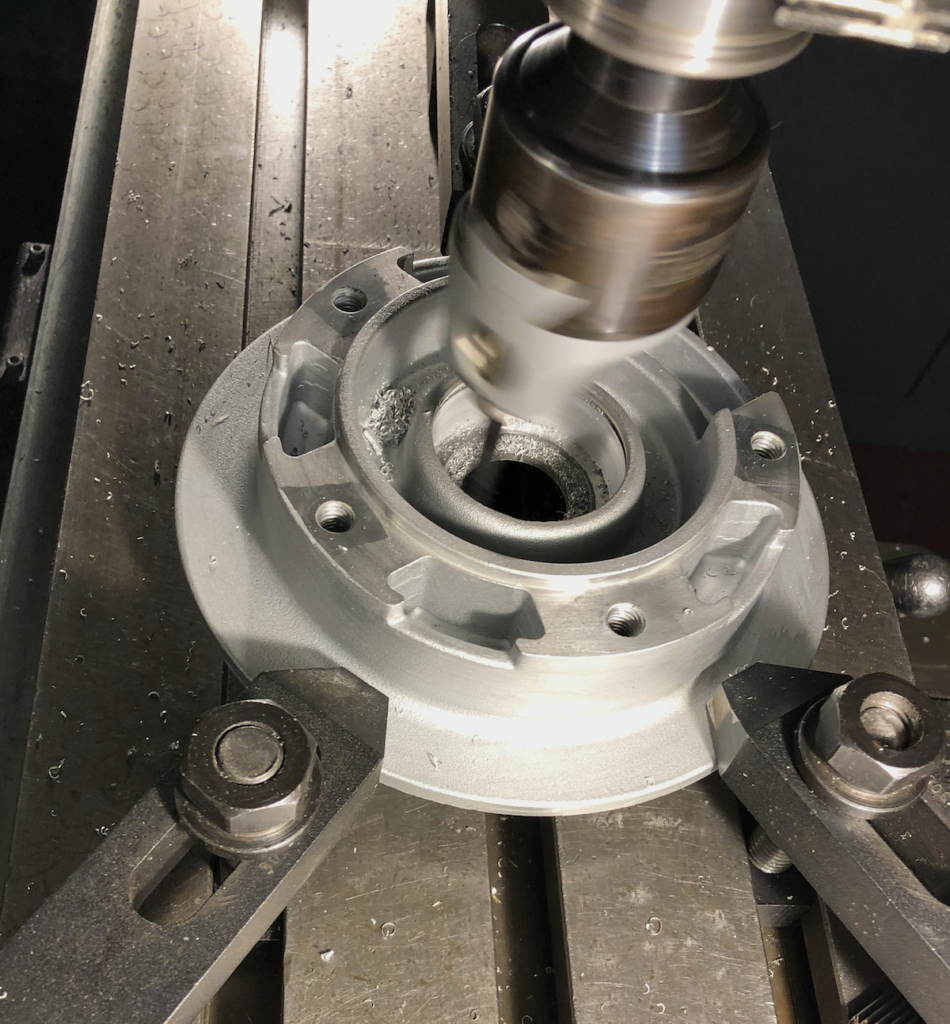Topics
Background
The aluminum rear brake flange is vulnerable when exposed to excessive heat caused by braking pad friction on the brake disc. See also the rear wheel discussion.
If the brake disc gets hot enough, energy transferred to the disc carrier will heat up the aluminum flange. Aluminum’s coefficient of expansion is very high compared to other metals; depending on the specific alloy, the expansion can be as high as 0.3% for each 100℃ increase. For example, a 600℃ increase would expand the bearing mount diameter by about 1.7%.
If the bearing mount heats up enough, the friction holding the bearing diminishes and eventually the entire outer race of the bearing will begin to rotate. This, in turn, wears down the bearing mount surface and that makes the bearing vulnerable to even lower temperatures.
In fact, this is exactly what happened to our flange! Upon close inspection, the diameter of the flange mount was widened to 47.27mm from 47.00mm by the turning action of the bearing outer race that probably occurred over many years of use.
Confirmation of this rotation wear comes from a comparison of the outer races of wheel bearings. The bearing on the bevel gear side did not move and its edge shows the expected age spots. In contrast, the bearing edge of the bearing on the brake disc side is smooth and shows clear signs of rotation scarring.
Disc thermal profile
A key factor in preventing a recurrence of bearing rotation is to limit brake pad friction heat from reaching the aluminum flange.
The physics involved with brake disc design are complex and involve materials, structure, and airflow design. A basic understanding — and good enough for our purposes — can be gained by looking at the temperature differentials on a simulated motorcycle brake disc.
The rim of the disc where the pads directly produce braking friction heats up the most, indicated in red with a 1.00 maximum reading. At the disc rotates, airflow and materials dissipate heat so that at the carrier bolt location, only 15% of the maximum heat remains.
The key questions are 1) how high is the maximum temperature, and 2) is the reduced carrier bolt temperature low enough to insure that the aluminum housing will not expand beyond its bearing holding diameter.
Modeling a typical motorcycle in extreme braking conditions predicts a maximum temperature around 600℃ (about 1100℉) at the pad interface. Dissipation brings the carrier bolt temperature down to about 90℃ (200℉) at the maximum extreme, and probably around 79℃ (175℉) during heavy, but not extraordinary, braking. Will the bearing hold or will it begin to rotate?
With a 0.03mm (.0012”) traditional interference fit and installation force of 500 pounds, the bearing becomes loose at a temperature around 170°F. Thus, heavy braking is just at the point where thermal expansion might cause the outer race to rotate. At the maximum extreme, the bearing will certainly begin to rotate, making it easier and easier to slip again in the future.
Thermal expansion mitigation
A tolerance ring is a shim device that can mitigate higher levels of thermal expansion. Made of spring steel, small bumps in the ring help compensate for differential thermal expansion of mating parts.
Even with its lower initial installation force, retention remains at 270-280°F, well within our expected maximum carrier bolt exposure of about 200°F.
To accept the larger outer diameter of the tolerance ring, the flange housing must be bored out from its worn diameter of 1.861″ to the optimal ring diameter of 1.927″.
Thankfully, we had to do this anyway since the wear pattern on the flange housing made it impossible to properly fit the bearing without some kind of shim.
So we solved two problems at one time: filling in the wear groove and improving the heat dynamics of the entire wheel. Since the rear wheel will be completely enclosed under the cyclecar chassis, it’s especially important to lower the sensitivity to heat due to the lower level of airflow compared to an open motorcycle.
The front wheels are a little less critical. The disc size is larger — 300mm versus 270mm — and front wheels are directly exposed to airflow. Also, because there are two front separate brake rotors, heat generation will be balanced between them, and bolt carrier temperatures are unlikely to go beyond 150℉, within the range that prevents outer race rotation.




